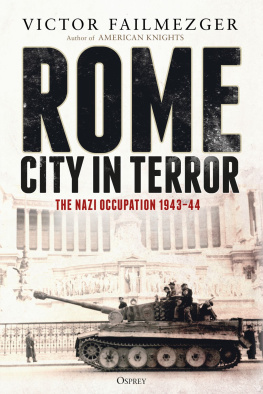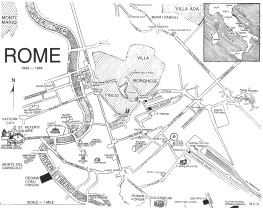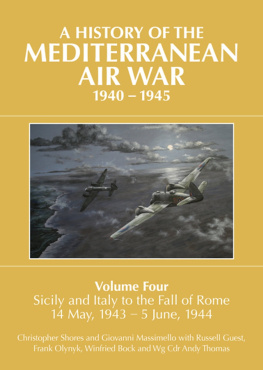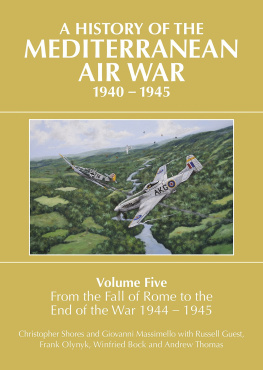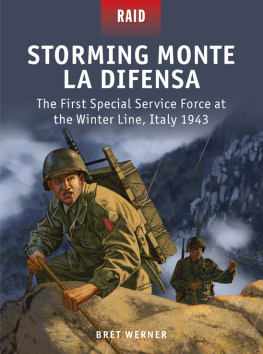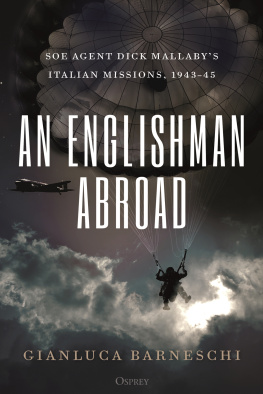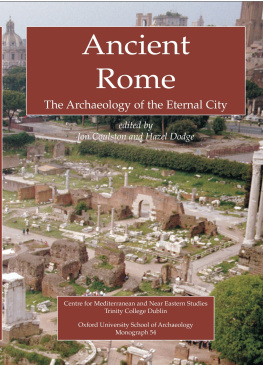
This book is dedicated to my wife of 50 years,
Patricia A. Failmezger

Contents
Many friends, colleagues, and others helped make this book come to fruition. First, thanks must go to my wife, Patricia, who helped at every stage. Then thanks to my first line reviewer, fact checker, and longtime friend, Chief Petty Officer Peter R. Knight, Royal Navy Retired. Pete and I were stationed together in Castel Volturno, outside of Naples, 50 years ago and he still lives in the Naples area.
Thanks also to Mr. Malcolm Barr, a veteran of The Associated Press. He read two early drafts of the book and made significant comments on the manuscript. He has earned my gratitude as he assisted with style and consistency.
Special thanks to my brother-in-law, Father Robert L. Grant, professor at Saint Ambrose University, Davenport, Iowa. Bob studied in Rome at the North American College during our tour of duty at the American Embassy and his enthusiasm for this book and his knowledge of Rome and Roman Catholic institutions together with his critical comments were most welcome.
Sometimes luck and the internet reunite old friends. The best man at our 1971 Naples, Italy wedding was Fred Bullock who contacted me out of the blue after almost 47 years. Fred volunteered to proofread the book and a wonderful proofreader he is. Fred, as an ex-corporal, Survey, Corps of Royal Engineers, British Army, also provided a much-appreciated double check on my use of British Army terms.
If this book begins to tell the very complicated story of the Nazi occupation of Rome with any degree of clarity, it is because of my learned friend Mr. Howard Klein. Howard was formerly a critic for the New York Times and a director of the Rockefeller Foundation in New York. His assistance with the pace and flow of the story allowed these characters to come to life and tell their stories.
While stationed at the American Embassy Rome, I had the pleasure to work with a friend from SMU college days, Mr. Joe B. Johnson. Joe was our Embassy press attach. I convinced him to not only read the book but to give me his comments for which I am very grateful.
For research assistance I am in debt to Pier Paolo Battistelli and Piero Crociani, co-authors of Osprey Publishings World War II Partisan Warfare in Italy. Pier Paolo provided me with material from the British National Archives detailing organization and personnel at the Aussenstelle Rom , material from the Archivio Ufficio Storico dellEsercito , Roma, and the Bundesarchiv in Germany. Pier Paolo warned that I might face criticism from locals as, even 70 years later, some of these events remain controversial. Piero lent me books from his extensive library and made recommendations for further reading. He also allowed me to copy parts of the daily reports for both German Kommandants of Rome. He thoroughly checked the manuscript and corrected many errors and was extremely helpful in the selection of photos for the book.
Dr. Lutz Klinkhammer, of the Deutsches Historisches Institut in Rom, graciously spent time with me, provided copies of his extensive writings on the period, and assisted with my access to the Institutes collection and entry to the Bundesarchiv photo collection.
Through Dr. Klinkhammer I was introduced to Amedeo Osti Guerrazzi, who many consider the Italian expert on the period. Amedeo gave me copies of several of his books, which proved invaluable. Further he helped me obtain electronic copies of more than 1,200 pages of research documents.
Dr. Alessia A. Glielmi at the Museo Storico della Liberazione is a wonderful researcher and historian. She has helped me with a wide variety of issues and assisted in obtaining permission to reproduce photographs and other items from the Museums collection.
In total, during the course of this research, I obtained more than 3,700 pages of documents and photographs, many from the US National Archives. I have made electronic versions of most of them available to the Museo Storico della Liberazione and to the Deutsches Historisches Institut in Rom .
Other individuals who provided guidance and assistance were:
Dr. Silvia Haia Antonucci at the Archivio Storico della Comunit Ebraica di Roma (ASCER);
Professor Allan Ceen, Professor of History of Urban Development at Studium Urbis , who helped with the Vatican maps of 19391945;
Katy Gorman, Dr. Mario Setta, and Patricia Chandler for their assistance in the Italian town of Sulmona;
Dr. Antonio Parisella, President of the Museo Storico della Liberazione;
Ann Pulver, friend, longtime resident of Rome, geography lecturer at Penn State, Rome campus, and our Borgo Pio landlady;
Dr. Riccardo Sansone, a historian of the period and an expert in what happened in the Quadraro area of Rome in April 1944;
Dr. Andrea di Stefano who provided important documents and is associated with the North American College.
I am also thankful to the following archives, libraries, and organizations:
Archivio Centrale dello Stato, Roma;
Archivio Ufficio Storico dellEsercito, Roma;
Biblioteca di storia moderna e contemporanea, Roma;
Georgetown University Manuscripts Library which holds the Harold H. Tittmann, Jr. Papers;
The National Archives, College Park, Maryland (NARA);
The US Army Military Heritage and Education Center, Carlisle, Pennsylvania;
The US Holocaust Memorial Museum, Washington DC.
Finally, special thanks to the entire Osprey team: Marcus Cowper, publisher; Kate Moore, editor extraordinaire; Gemma Gardner, senior desk editor, and Cleo Favaretto (desk editor for this edition), for their help and guidance with this and my previous book, American Knights. And special thanks to the Osprey/Bloomsbury publicists Elle Chivers in Oxford and Rayshma Arjune in New York for their suggestions and work in publicizing this book; the Osprey Team made this book a reality.
Every effort has been made to use correct Italian and German words and grammar; however, the reader is asked for indulgence as neither of these languages is my native tongue. Any errors, omissions or other mistakes are mine and mine alone.
Victor Tory Failmezger
Middletown, Virginia and Rome, Italy, 2019
Rome is a city of amazing clear, impossibly blue skies, its ancient buildings flanked by tall umbrella pines. Double and triple arched windows reach to the high open loggias crowned by penthouses with green gardens of trees and plants. Its ancient streets are lined with block upon block of churches, palaces, and apartments, whose stone reflects the light which changes with every angle of the sun. Statues of angels abound, including one that causes a lop-sided effect on the high faade of the church of SantAndrea della Valle, recalling scene one of Tosca , the story of a previous occupation of Rome.
Then there are the feral cats of Rome. Proud, arrogant, aristocratic, and secure in the knowledge that some of their ancestors fed the populace during hard times. Street markets are full of fruits and vegetables so fresh you can taste them with just the smell. Coffee-scented air wafts from a thousand bars, stacked with pastries so beautifully displayed that you want one of each. Small tables and chairs outside these bars face narrow ancient streets of foot-aching cobblestones.
Walking through the city you continually catch glimpses of interior courtyards with fountain, statues, and flowering plants. Around a corner, you hear before you see it, the splash and glitter of an unexpected fountain stacked with naked gods and sometimes turtles, like the Fontana delle Tartarughe, at the entrance to Romes Jewish Ghetto. Banks of flowers of every color line the windows and flower stalls while old women in black and men in suit jackets sporting caps from another time sit outside doorways. Boys zip by on motorcycles with slender, dark-haired, beautiful girls riding behind them. They enjoy their youth but are destined to become plump matrons and aging lovers. Interspersed throughout the city are the big open piazzas filled with people meeting friends and going about their business. This is Rome; beautiful, magnificent, magical Rome, the Rome that was subjected to abject terror during the Nazi occupation.

